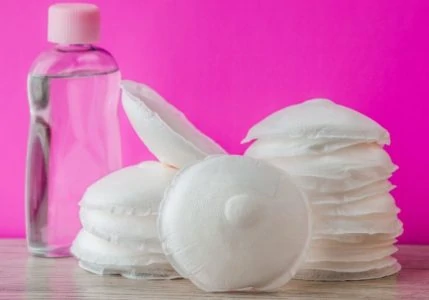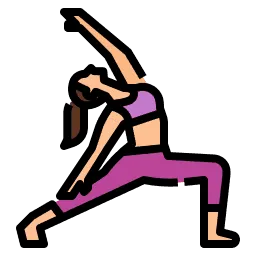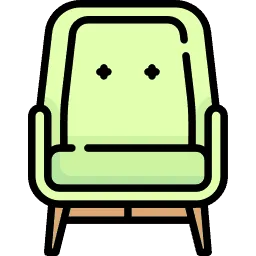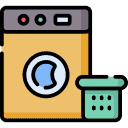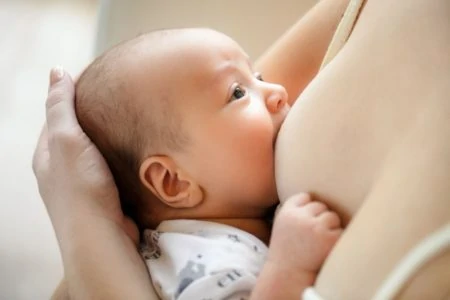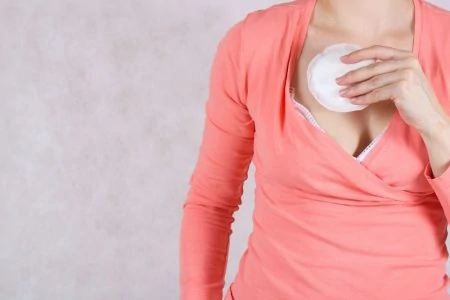Leaking breast milk is a rite of passage for new moms, but that doesn’t make the wet spots on your shirt any less embarrassing. Whether you are at work, the gym, or trying to sleep, you need gear that keeps you dry.
We researched and tested the top options to save you from laundry nightmares. These picks are absorbent, non-irritating, and discreet enough to wear under anything. Here is how to keep your shirts stain-free and your confidence high.
- Absorbs plenty without feeling damp
- Fits well, little shifting needed
- Invisible through tighter shirts
- Not bulky, smooth under clothes
- Soft on sore nipples
- Individually wrapped - easy to pack
- Can be used right away, saves time
- Big enough to fit larger-sized breasts
- No bunching with repeated washing - lasts longer
- Durable, hold up well after many washes
- Don’t feel lumpy when worn
- Gentle on sensitive skin
- Washable and reusable, saves money
- Ultimate comfort and protection
- Includes waterproof carrying bag, travels well
- A complete kit
- Super soft, organic bamboo material
- 100% leak-proof outer lining
Disposable vs. Washable Nursing Pads
The biggest choice you will make is between disposable and reusable pads. Most moms actually use a mix of both depending on their schedule.
Disposable Nursing Pads
Disposables are the heavy lifters of leak protection. They are generally thinner but highly absorbent due to polymer cores similar to diapers.
Even if you prefer reusables, I recommend keeping a box of these for emergencies. They are lifesavers when you fall behind on laundry or go on weekend trips.
- Adhesive backing: Most disposables have sticky strips that adhere to your bra, preventing the pad from sliding around.
- Hygiene: Since you toss them after one use, they are great for preventing yeast infections (thrush) if you change them frequently.
- Cost: This is the pricier route long-term. You might burn through two or three 60-count boxes a month.
- Convenience: Great for travel. You don’t need to carry around a wet bag for used pads; just toss and replace.
Leaks happen, but your supply will eventually regulate. You likely won’t need heavy-duty pads forever, so don’t stock up on 10 huge boxes immediately.
Editor's Note:
Katelyn Holt RN, BSN, BCWashable Nursing Pads
Washable pads are wallet-friendly and eco-conscious. They are usually made from cotton, bamboo, or silicone.
While they require more effort, many moms find the natural fibers softer against sensitive nipples than the plastic backing of disposables.
- Eco-friendly: You aren’t adding to landfills with every feed.
- Cost-effective: You pay once upfront. A stash of 10-12 pairs usually lasts your entire breastfeeding journey.
- Comfort: Bamboo and cotton allow more airflow, which is healthier for healing skin.
- Bulk: They can be thicker. If you wear thin t-shirts, you might see the outline (rim) of the pad more easily than with a disposable.
How to Choose Nursing Pads
You don’t want to realize a pad isn’t working when you are already out to dinner. Here are the specific factors to check before buying.
Product Reviews
Say goodbye to milk stains with these top-rated picks for every budget and flow type.
Bamboobies Super-Soft Washable Nursing Pads
Best Reusable Nursing Pads
This pack covers your bases with three pairs of thin, heart-shaped regular pads and one pair of thicker, round overnight pads. The rayon-from-bamboo velour is soothing against chafed skin, a huge plus during those first tender weeks of nursing.
The standout feature is the silhouette. The heart shape cups your breast without crinkling, making these much less noticeable under T-shirts than standard circular pads. They are machine washable, though you should avoid fabric softeners to keep them absorbent.
These are a dream. They are so soft and work incredibly well. Definitely put these on the baby registry!
Editor's Note:
Katelyn Holt RN, BSN, BCPros
- Super soft bamboo velour soothes sore nipples.
- Heart shape prevents visible lines under shirts.
- Includes heavy-duty overnight options.
Cons
- More expensive upfront than generic brands.
- Heart shape might shift on larger breasts.
Our Ratings
Lansinoh Stay Dry Disposable Nursing Pads
Best Disposable Nursing Pads
Lansinoh is a giant in the breastfeeding world for a reason. These pads feature a “Blue Lock” core that turns liquid into gel, keeping moisture away from your skin. This is crucial for preventing irritation and bacterial growth.
They are quilted for a honeycomb feel and feature two adhesive strips to keep them anchored in your bra. The contoured shape fits a wide range of cup sizes. If you need something that can handle a heavy letdown without feeling like a wet sponge, this is it.
These are great for the start of breastfeeding because they are super absorbent. I found them helpful overnight in those early months. They aren’t the softest, but they are functional.
Editor's Note:
Katelyn Holt RN, BSN, BCPros
- High absorbency keeps skin dry.
- Two adhesive strips prevent shifting.
- Individually wrapped for hygiene on the go.
Cons
- Not recyclable; creates more waste.
- Can feel a bit “papery” compared to cloth.
Our Ratings
EcoNursing Washable Organic Nursing Pads
Best Organic Nursing Pads
This set offers variety: you get both flat breast pads and contoured pads to suit different bras and flow needs. The organic bamboo is naturally hypoallergenic, making these a smart choice for moms with eczema or contact dermatitis.
The set includes a laundry bag, which is essential for keeping your pads from disappearing into the “sock void” of your washing machine. They also feature a leak-proof backing layer to stop milk from wicking through to your shirt.
Pros
- Hypoallergenic organic bamboo.
- Large surface area fits fuller breasts well.
- Does not bunch up inside the bra.
Cons
- Can show through thin clothing.
- Slightly less absorbent than polymer disposables.
Our Ratings
Enovoe Organic Bamboo Breastfeeding Pads
Best Hypoallergenic Nursing Pads
Enovoe gives you quantity without sacrificing quality. With 12 pairs in the pack, you won’t be forced to do laundry every singe day just to have clean pads. They come in varied pastel colors (plus black and white) to match different bras.
These are multi-layered: organic bamboo against the skin, an absorbent middle, and a waterproof outer layer. They are designed to withstand frequent machine washing and drying without losing their shape or pillage.
Pros
- Large 12-pack offers great value.
- Multi-color options match different lingerie.
- Gentle on sensitive or damaged skin.
Cons
- Needs a few washes to reach maximum softness.
Our Ratings
Kindred Bravely Washable Organic Nursing Pads
Best Nursing Pads for Traveling
Travel and breastfeeding don’t always mix well, but this kit helps. The included waterproof carry bag lets you store used, wet pads safely in your purse without soaking your other items.
The pads themselves use a smart three-layer system. A waterproof PUL layer faces the bra, microfiber absorbs the milk, and soft organic bamboo touches your skin. The contoured design helps them sit flush against the breast, reducing bulk. They are reliable enough for long car rides or flights where you can’t change immediately.
Pros
- Three-layer design maximizes protection.
- Includes a waterproof wet bag for storage.
- Contoured shape reduces bulk.
Cons
- The waterproof layer can make a slight “crinkle” sound.
Our Ratings
M&Y Organic Bamboo Nursing Pads
Best Nursing Pads for Baby Showers
This isn’t just a pack of pads; it is a full system. You get seven pairs of organic bamboo pads, a mesh laundry bag to keep them safe in the wash, and a pretty organza gift bag for storage.
The pads are 100% leak-proof thanks to a solid outer lining. They are slightly larger than some competitors, offering better coverage for shifting breasts during sleep. The bamboo material is naturally antibacterial and thermoregulating, keeping you cool in summer and warm in winter.
Pros
- Complete kit makes for a great gift.
- Leak-proof outer lining prevents accidents.
- Organza bag keeps your drawer organized.
Cons
- Thicker design may be visible under tight t-shirts.
Our Ratings
Medela Disposable Nursing Bra Pads
Best Nursing Pads for Heavy Leaking
Medela uses a highly absorbent polymer blend that locks moisture deep inside the pad. This is vital for heavy leakers who soak through standard cotton pads in an hour.
These feature double adhesive tape to stop the dreaded “migrating pad” issue. The contoured shape cups the breast naturally. While they aren’t as plush as bamboo, their ability to hold a significant volume of liquid makes them a favorite for moms with oversupply issues.
Pros
- Excellent for heavy flow and oversupply.
- Double adhesive keeps pad firmly in place.
- Budget-friendly compared to boutique brands.
Cons
- Can show a crease line through tight clothes.
- Wrappers can be tricky to tear open quickly.
Our Ratings
Honorable Mention: Silicone LilyPadz – Unlike absorbent pads, these silicone covers actually stop the milk from coming out by applying gentle pressure. They are reusable, adhere to your skin like a second layer, and are invisible under sheer clothing. They are tricky to use but great for swimming or evening gowns.
Tips for Using Nursing Pads
Using a nursing pad seems straightforward, but proper placement prevents leaks and infections.
- Clean first: Ensure your nipple is dry. Trapping moisture against the skin invites bacteria.
- Apply cream: If your nipples are cracked, apply a thin layer of nipple cream before the pad.
- Center it: For disposables, peel the backing and place your nipple dead center. Press the bra cup against it to secure the adhesive.
- Position reusables: Place the pad inside the bra cup first, then pull the bra up. Adjust until it covers the entire areola.
- Removal: If a pad sticks to a dried nipple, do not pull. Moisten it with a little warm water to release the latch gently.
Change your pads as soon as they feel damp. Wet pads are a breeding ground for thrush (yeast), which is painful and difficult to treat. If you do develop thrush, switch to disposables immediately and discard them frequently until the infection clears to avoid reinfecting yourself.
